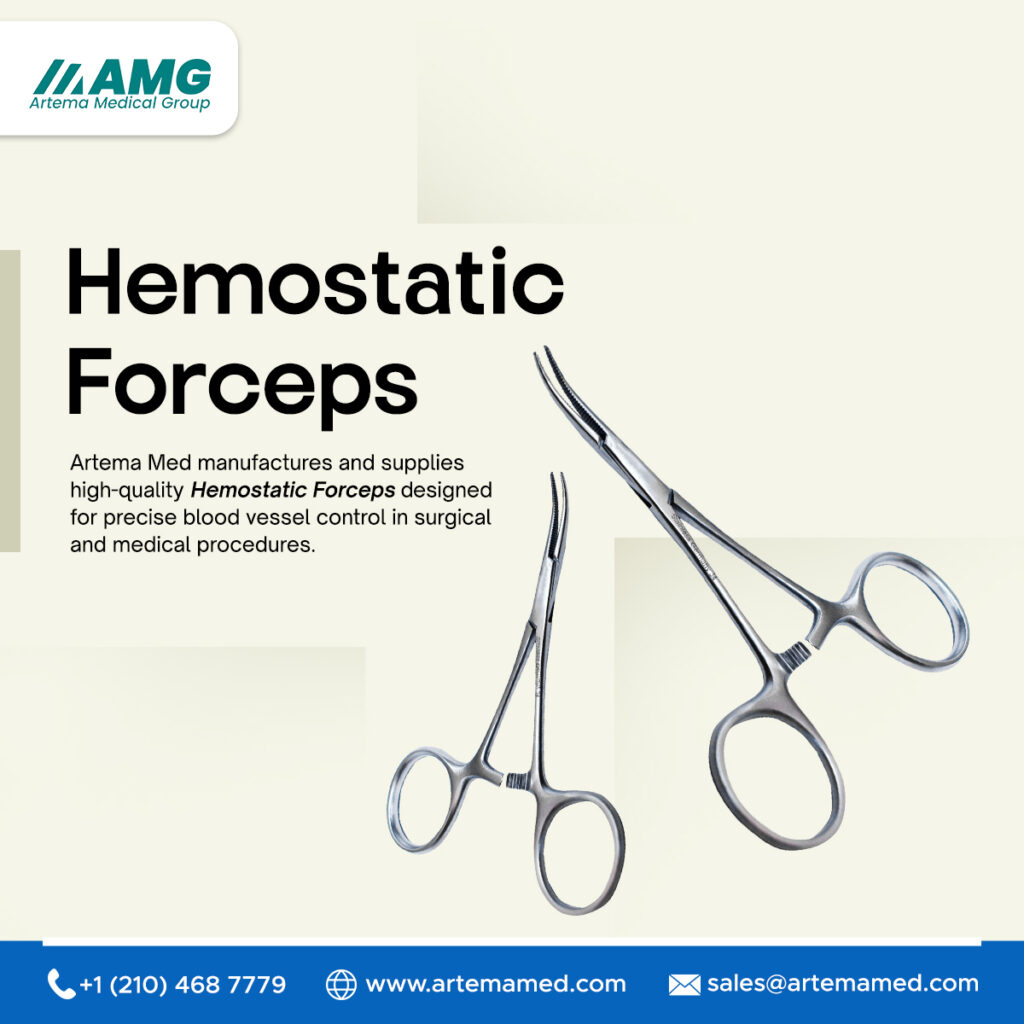Introduction to Hemostatic Forceps
Hemostatic forceps are one of the most important surgical tools used in medical procedures. They help control bleeding by clamping blood vessels during operations. Surgeons rely on them to stop blood flow quickly and safely. Their use is common in nearly every type of surgery, from minor procedures to life-saving operations. Without them, it would be difficult to manage blood loss, and patient safety would be at risk.
Why Hemostatic Forceps Are Vital
In any surgery, bleeding is expected. Hemostatic forceps are designed to stop bleeding at its source. They grip blood vessels and stop the flow of blood until the vessel can be tied off or sealed. This gives surgeons the time and space they need to work without interruption. The tool has a locking feature that keeps it in place, freeing the surgeon’s hands for other tasks.
These forceps not only help manage bleeding but also assist in holding tissue or small objects during surgery. Their usefulness goes beyond just clamping vessels. In emergency surgeries, they can be life-saving by helping control heavy bleeding fast. This is why they are always part of a standard surgical set.
Design and Function of Hemostatic Forceps
Hemostatic forceps are usually made of stainless steel. This material is strong, rust-resistant, and easy to clean. The forceps have two arms connected with a hinge and serrated jaws at the tip. The locking mechanism helps hold the grip firmly in place. Some models are straight, while others are curved to reach difficult spots. The different styles allow surgeons to choose the best one based on the needs of the procedure.
The forceps are used early in the operation and often throughout. Their simple but effective design makes them easy to handle, even in complex procedures. The firm grip allows surgeons to work confidently, knowing the bleeding is under control.
Role of Hemostatic Forceps in Various Surgeries
Hemostatic forceps are not limited to a single type of operation. They are used in general surgery, orthopedic procedures, dental surgeries, and even in veterinary medicine. Their role is the same across all fields—to stop bleeding and support tissue control.
In abdominal surgeries, they help manage large vessels. In plastic surgery, they allow for delicate control. During childbirth procedures, they ensure bleeding is kept in check. Because of their versatility, they are one of the first instruments prepared before surgery begins.
Connection to Magill Forceps
While Magill forceps are different from hemostatic forceps, both tools are often used during medical procedures. Magill forceps are commonly used during intubation. They help guide tubes into the windpipe and are also helpful in removing objects from the airway. Their curved shape makes them perfect for use in the throat or nasal passages.
Although Magill forceps do not control bleeding, they play a critical role in airway management. When used alongside hemostatic forceps, they contribute to a smooth and safe operation. The teamwork between these instruments allows medical teams to work efficiently and safely.
How Alligator Forceps Compare
Alligator forceps serve a unique role, especially in ENT (ear, nose, and throat) procedures. These forceps are long and thin with a small gripping end. Their design allows them to reach tight and narrow spaces where standard tools cannot go. Like Magill forceps, they are not used to control bleeding but are important in precise tasks.
Alligator forceps are often used to remove foreign bodies from the ear or nose. They can also help place or retrieve small materials during surgeries. When used together with hemostatic forceps, they add precision and control to a surgeon’s toolkit. Each has a specific purpose, but all are critical in ensuring the success of a surgery.
Benefits of Using Hemostatic Forceps
The main benefit of hemostatic forceps is their ability to stop bleeding quickly. This allows surgeons to perform procedures without the constant issue of blood covering the area. Reducing blood flow also lowers the risk of infection and helps improve visibility during surgery.
Another advantage is that they are reusable. With proper cleaning and sterilization, they can be used many times without losing their quality. This makes them a cost-effective choice for hospitals and clinics. In some situations, single-use versions are available, especially in emergency or field surgeries.
Sterilization and Care
To keep hemostatic forceps safe and functional, they must be cleaned and sterilized after each use. This helps prevent infections and keeps the tool in good working condition. Proper care includes washing, drying, and using high-temperature sterilization methods. Inspections are also important to check for wear, rust, or damage.
If not cleaned properly, forceps can become a risk to patients. Dirty instruments can introduce bacteria into the body and cause serious problems. That’s why healthcare teams follow strict rules for cleaning and handling.
Training and Usage in the Field
Surgeons and nurses receive detailed training on how to use hemostatic forceps. Knowing when and how to use them is part of basic surgical skills. Students practice on models before using them in real surgeries. The more experienced the user, the more effective the tool becomes.
In the hands of skilled professionals, these forceps become an extension of their abilities. Quick decisions during surgery can save lives, and having the right tools ready is part of that success. Hemostatic forceps are often the first choice when bleeding begins and the last tool removed once the bleeding is under control.
Conclusion
Hemostatic forceps are essential tools in every surgical setting. They help manage bleeding, hold tissues, and improve patient outcomes. When combined with tools like Magill forceps and alligator forceps, they create a powerful set of instruments for surgeons. Each tool has a unique role, but together they ensure procedures are safe, clean, and successful. The importance of hemostatic forceps cannot be overstated—they are truly a foundation of modern surgical care.
For more info visit our website Artema Med

